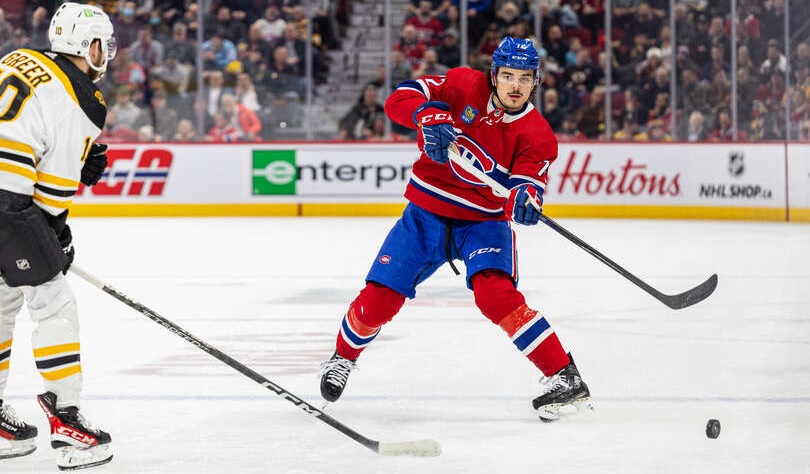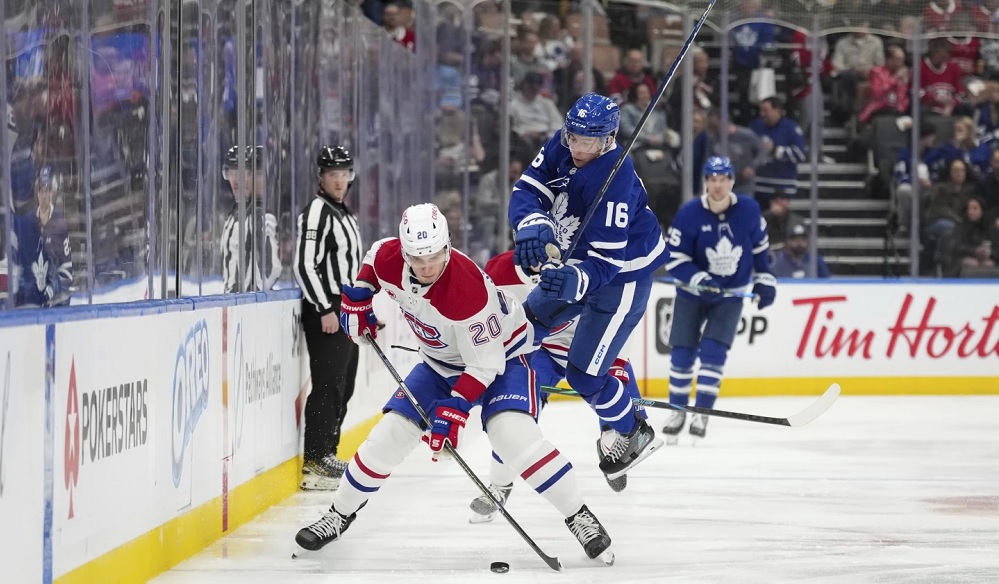HabsWorld.net --
Noise. It’s as much a part of the Montreal Canadiens’ fabric as their iconic bleu-blanc-rouge jerseys. In the evolving Kent Hughes era, distinct from the Bergevin era’s often blunt and guarded approach, a refreshing openness permeates discussions about team composition, progress, and future aspirations (you can thank Chantal Machabee for that). This shift, while a departure from an institution often tethered to an ‘us against the world’ tradition and past glories, signals a modern approach to asset management … FINALLY.
Now hold on, Marc Bergevin had his moments, certainly, but the pre-Hughes drafts, seemingly guided more by personal predilections than performance metrics, raised eyebrows. I still cringe at Trevor Timmins fawning over Jayden Struble’s Adonis physique.
Let’s not deny it, the team’s decade of modest performance, punctuated only by a Covid-bubble Stanley Cup final appearance, has swelled the ranks of their farm team. This abundance has fostered tough conversations, particularly regarding a packed blue line. The unexpected arrival of David Reinbacher this summer adds another layer to this complexity, simply said, there are too many defenders as the Habs wonder where the scoring will be coming from.
Historically, the Canadiens have been a defensive powerhouse. Think of the 1970s, when legends like Larry Robinson and Serge Savard not only fortified Montreal’s defence but were pivotal in their Stanley Cup victories. Their legacy sets a lofty benchmark for today’s prospects and it still reverberates for the fans who saw it on the ice.
Yet, the surprise isn’t that the Habs have continuously drafted defencemen. It’s the sheer number of them that are available for them to sign, year in and out, with over 100 of them on the UFA market in 2024 alone, according to CapFriendly, was it really necessary to draft that many D-men? This logjam at defence seems counterintuitive to the team’s need for robust offensive threats, especially as the NHL shifts towards a more offence-centric paradigm.
Which brings us to today.
The chatter about trading a defenceman like Arber Xhekaj is already rampant. Xhekaj, a young, formidable force blending skill and strength, showed promising chemistry with Logan Mailloux in Laval before being recalled. Then there’s Jordan Harris, whose prolonged college career caused a stir of insecurity among fans. However, we must tread carefully. The tales of Mikhail Sergachev and Ryan McDonagh, both once promising freshly drafted Habs, serve as cautionary tales. They continue to chase their peak (or sunset in McDonagh’s case) elsewhere while we reminisce about what could have been with a defensive lineup boasting Andrei Markov and P.K. Subban in their primes.
Can Hughes and his team learn from these past missteps? It’s a crucial question as we navigate this defensive traffic jam. True, not every prospect will reach the heights of a Sergachev or a McDonagh. We’ve seen the likes of Ryan O’Byrne and Nathan Beaulieu, reminders that not every farm talent blossoms into top-line material.
But before any trading decisions are made, Hughes owes it to the Canadiens’ future – and to the legacy of Robinson and Savard – to ensure that if they reach the Cup Final again, their homegrown defencemen aren’t donning the opponent’s jersey. In a perfect world, they would be defending the legacy of the bleu-blanc-rouge.
The trade deadline isn’t that far away. This one, more than any before it, will be an assessment of their ability to know what they have in hand, something the Habs in the past struggled with.
It’s wait-and-see time.


